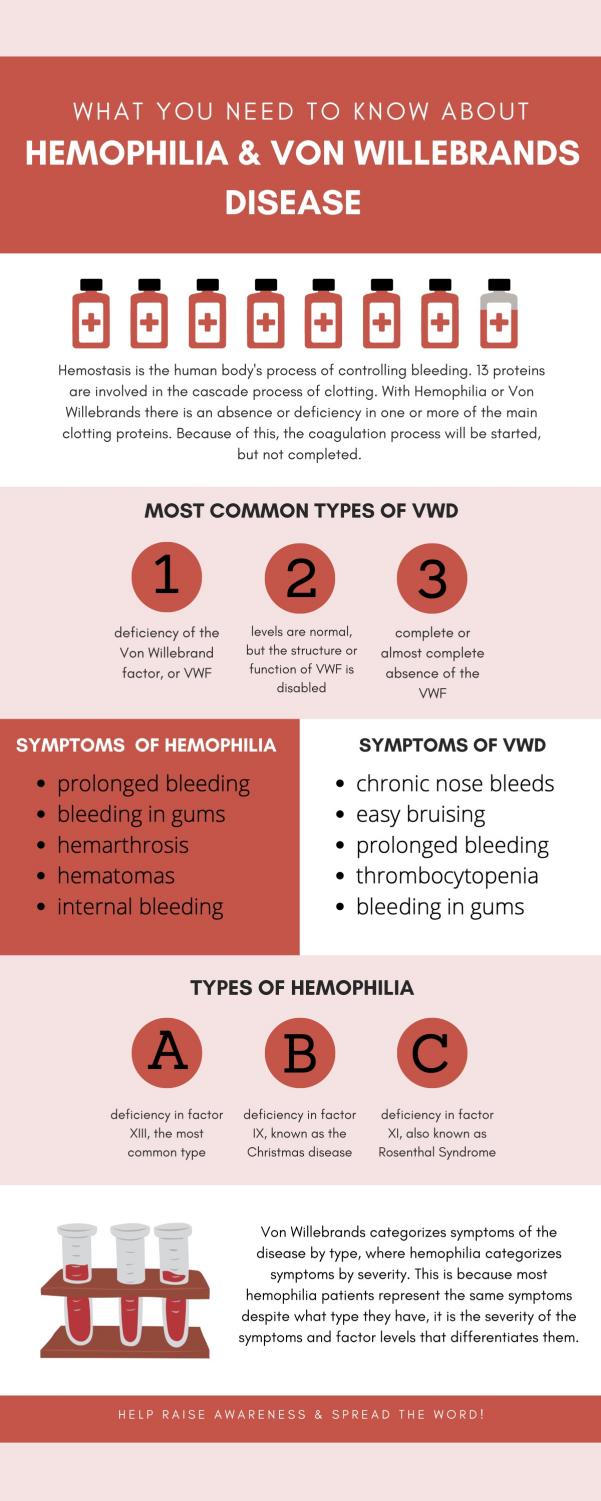Senior Jenna Wilcox spreads Hemophilia and Von Willebrands awareness
April 9, 2021
There is a massive amount of opportunities that come from the four years of classes in the biomedical pathway, specifically the final fourth-year capstone project.
Seniors in their fourth year of Biomedical Sciences, who are also known as biomedical interventions, are given an assignment that includes five months of conductive research for a final product. This involves a 10-15 minute presentation, a poster board and a 15-30 page final research paper.
Students pick their topic and can choose whether the project is a community awareness outreach project, a job shadowing opportunity or a research experiment.
The following information below is by biodmedical interventions senior Jenna Wilcox.
Her specific capstone project is aimed to “help raise awareness of Hemophilia and Von Willebrands.”
Her project information is below.
**

Hemostasis is the human body’s process of controlling bleeding and preventing damaged blood vessels from losing too much blood. 13 proteins are involved in the cascade process of coagulation, or the process of clotting blood.
`A person who is affected by Hemophilia or von Willebrands has an absence or deficiency in one or more of the main 13 clotting proteins. Because of this, the coagulation process will be started in the affected person’s body, but not completed.
This leads to an unstable platelet plug and continual bleeding over long periods, which can lead to many complications. Von Willebrand’s disease is the absence or deficiency of the von Willebrand protein. There are several different types of von Willebrand’s disease categorized by severity and cell structures including type 1, 2, 2a, 2b, 2n, 2m, and 3.
Hemophilia is an X-linked recessive inherited disorder that causes a mutation on chromosome 12 resulting in hemophilia. there are three types of hemophilia classified by factor deficiency. The first being, hemophilia A which is a deficiency or absence of factor XIII, the most common type.
The second being hemophilia B, an absence or deficiency of factor IX, also known as the Christmas Disease. The last type of hemophilia is hemophilia C, also known as Rosenthal syndrome, a deficiency or absence of factor XI. Von Willebrands categorizes symptoms of the disease by type, where hemophilia categorizes symptoms by severity.
This is because most hemophilia patients represent the same symptoms despite what type they have, it is the severity of the symptoms and factor levels that differentiates them.
Illustration by Jenna Wilcox






